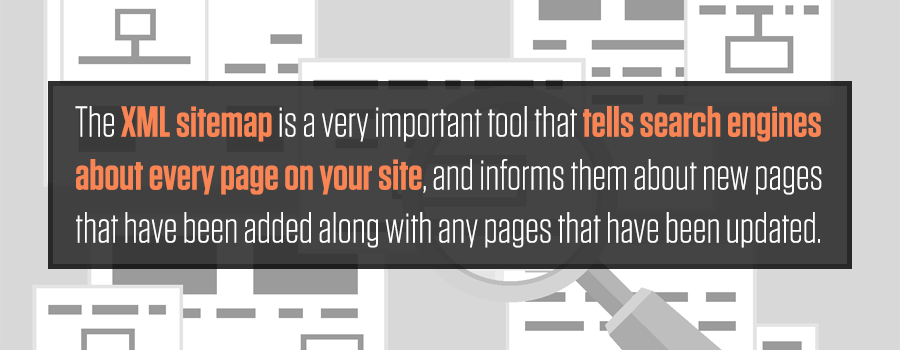
The Importance Of XML Sitemaps And How To Create Them
An XML sitemap is an XML file (or set of files) hosted on your Web server that contains a list of all pages on your website. Along with a list of URLs, other information about each page can be found within this file — such as the last modified date of the page, the change frequency of the page, and the priority of the page (relative to other URLs on the site).

Having an XML sitemap on your site that is regularly updated is a key piece of any successful SEO campaign. The XML sitemap is a very important tool that tells search engines about every page on your site, and informs them about new pages that have been added along with any pages that have been updated. This can help ensure that new and updated content gets indexed quickly, and can help search engines identify the originating source of content if your content gets syndicated to other websites.
If you don’t have an XML sitemap, it’s a fairly easy process to get one created and uploaded to your server. There are many different ways to go about this, and we’ll discuss some of the more common methods below.
Drupal and WordPress Plugins

Drupal and WordPress are the two most common content management systems (CMS) out there today; they combine to make up approximately 25 percent of all websites. If that is the case, you are in luck — as there are many good plugins/modules that will allow you to get an XML sitemap added to your site with little to no hassle.
For Drupal, this is the standard module we’ve been using at Straight North for many years: https://www.drupal.org/project/xmlsitemap
WordPress has many XML sitemap plugins available, but this is the one that we’ve been installing and using with good success: https://wordpress.org/plugins/google-sitemap-generator/
For both, you can install the plugin to generate an XML sitemap by simply clicking a button. However, there are many more configuration settings available that will allow you to customize items such as change frequency, priority and which pages are included/excluded from the sitemap. As a result, it is very important to spend the time to update the configuration until you get a sitemap that suits your needs.
Other Tools
If you have a CMS other than Drupal or WordPress, most likely there are similar plugins available. A simple Google (or Bing, if that’s what you’re into) search should turn up what you are looking for.
Some CMS platforms, such as Evoq, have a built-in XML sitemap generator. If you have a static website or if you are unable to find a suitable plugin for your CMS, you will need to use a program that will crawl your site and create the file(s) for you to upload to your server.
You could manually create an XML sitemap file, but that is going to be very time consuming; using a third-party tool will be the most efficient method. If you want to create one by hand, all of the information can be found here: http://www.sitemaps.org/protocol.html
If creating a sitemap by hand isn’t something you want to do, Screaming Frog is a nice desktop program we use at Straight North. This handy little spider tool does all kinds of neat stuff, and generating XML sitemaps is one of the things for which we frequently use it. In case you are interested, instructions can be found here: http://www.screamingfrog.co.uk/xml-sitemap-generator/
Online Sitemap Generators

A bevy of online sitemap generators can be found with a quick Google search, and most are equally as simple to use. Just enter your Web address into the form field —within a few minutes, an XML sitemap will download to your computer (which you will need to upload to your Web server). A few we’ve used successfully are:
Whatever method you use for creating an XML sitemap, there are a few things you will want to do after you’ve got it uploaded to your server. They are:
- Link it up from your robots.txt file
- Submit it to both Google and Bing Webmaster Tools
- Keep it updated!
It is a good practice to edit your robots.txt file and place the path to your XML sitemap file in there. This helps to make sure search engine spiders can easily find your sitemap file. There is no downside to doing this; it will take only a minute, so it’s definitely worth it. It’s as simple as adding the following line to your robots.txt file:
Sitemap: http://www.domain.com/sitemap.xml (domain.com is your actual website domain; sitemap.xml is the actual name of the file you’ve uploaded to the server)
Next, you will want to make sure you have submitted your sitemap to both Google and Bing. You will want to do this from inside of both Google and Bing Webmaster Tools accounts.
Lastly, make sure to keep your sitemap updated. If you are using a CMS plugin, chances are this is happening automatically as content is updated and added/removed from the site. However, if you have a manually created sitemap, or if you’ve used third-party software or service to create the sitemap, you will need to make sure you keep a fresh copy of your latest sitemap on your server at all times.




